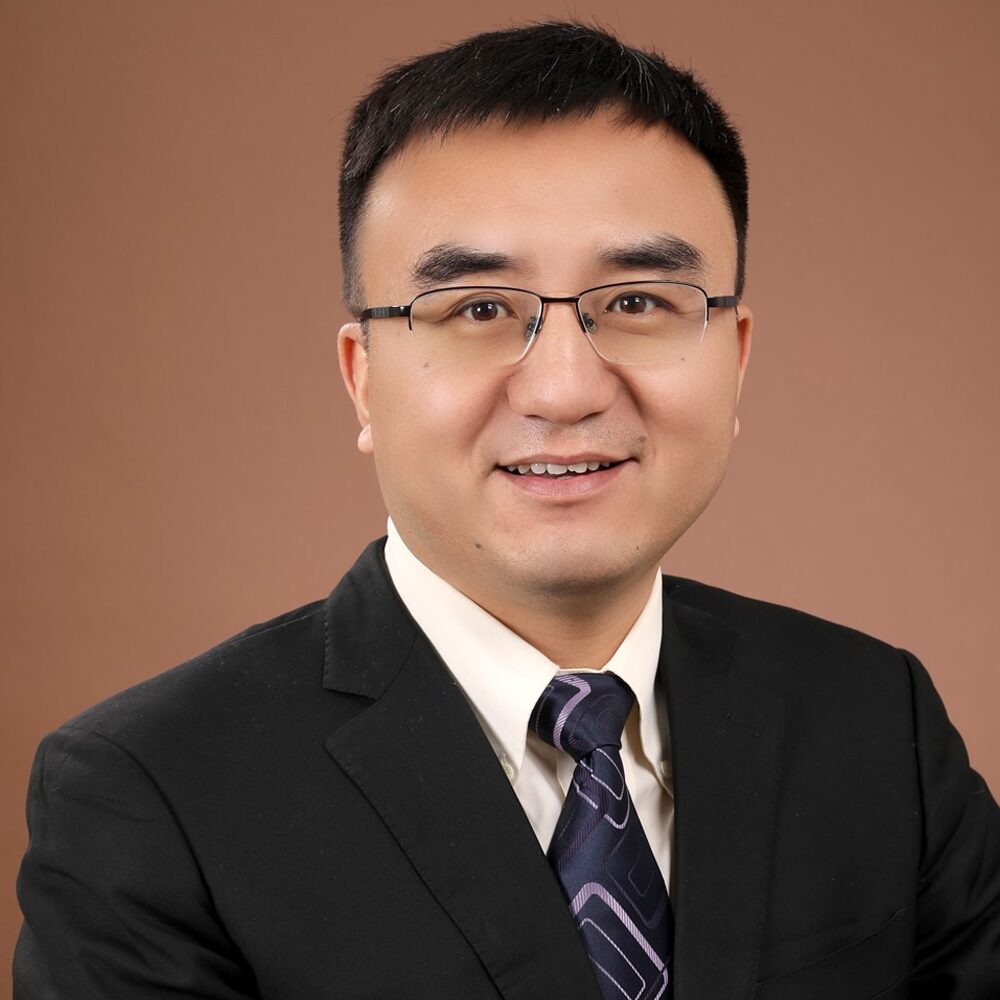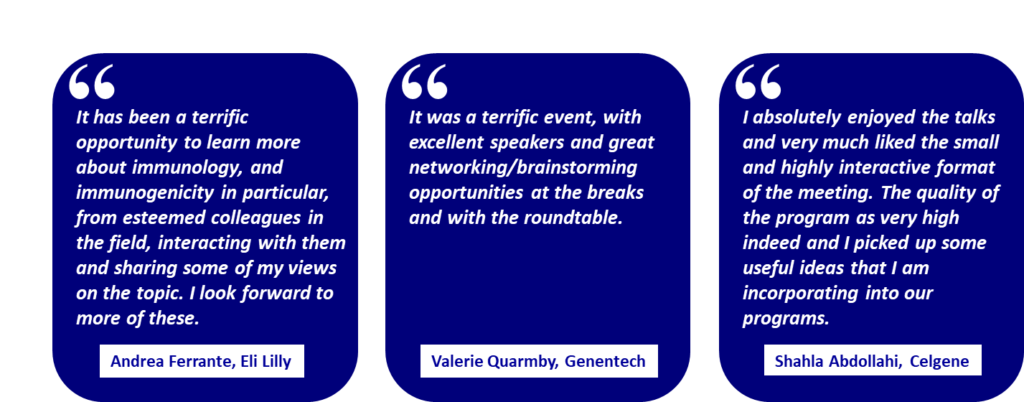Day 1 Program (1 September 2025)
Click for Day 2 Program
Check out our Selected Poster Presenters
|
| 8:10am Conference Registration Open - Coffee and Tea will be served |
| 8:40am Welcome Speech & Opening Remarks |
From Immunity to Outbreaks: Understanding Infectious Diseases for Better Pandemic Readiness |
9:00am Keynote Speech: Viral warfare - frontiers in cellular mechanisms and therapeutic interventions
Prof. Lisa Ng
Executive Director at Infectious Diseases Labs (A*IDL), A*STAR |
Global warming is expanding the habitats of mosquito vectors and contributing to an increase in mosquito-borne diseases. Arboviral diseases are resurging globally, with Chikungunya virus (CHIKV) demonstrating a troubling capacity for large-scale outbreaks. In 2024, CHIKV re-emerged in Réunion Island with 47,500 cases and 12 deaths reported by May 2025. Transmitted by Aedes mosquitoes, CHIKV has become a major concern due to the highly debilitating chronic joint disease it causes. While current control measures, including vaccines, insecticides, and antimicrobial therapies, have made strides, their effectiveness is increasingly compromised by antimicrobial resistance, insecticide resistance or tolerance. These challenges underscore the urgent need for alternative strategies to control transmission and mitigate the growing threat of mosquito-borne diseases in a warming world. I will describe the body of work over the past 2 decades on identifying the specific immune cell populations involved in CHIKV infection, understanding the mechanisms of host-virus interaction and opening new avenues for immunological therapeutics against chikungunya. I will also discuss promising avenues for interventions such as targeting specific immune modulators in mosquito saliva presents a new frontier for therapeutic development. I will discuss on the immunomodulatory effect on human myeloid cells and its impact on CHIKV immunopathology in vivo. I will also present data on antibody responses associated with disease progression in patients infected with CHIKV. The findings suggest new targets as possible therapeutic markers for modulating immune responses and mitigating the inflammation associated with mosquito-borne viral infections. |
|
9:30am Outbreak Response: Pitfalls we can manage
Prof. Dale Fisher
Programme Director Centre for Infectious Disease Emergency Response, NUS |
All agree that more pandemics are inevitable although their nature will vary from a novel respiratory virus with community spread as we have just experienced to one where transmission is generally later or not even spread by respiratory secretions at all. While the COVID-19 response demonstrated great success stories such as the research to inform strategy and interventions internationally there remain many areas that were found wanting to varying degrees. The crucial early response readiness phase was often missing. Likewise many high-income counties that seemed to prepare well did not engage their communities adequately nor coordinate well across government and non-government sectors. Global sharing of resources, misinformation and escalating vaccine hesitancy all contribute to modern day challenges we need to manage proactively. |
|
9:45am Vaccine and Therapeutic RNA Development for Equity Access
Prof. Kiat Ruxrungtham
Director in Chula Vaccine Research, Chulalongkorn University |
Commercial-driven vaccine and therapeutic RNA development has primarily benefited high-income countries, leaving behind populations without health insurance and those in low- and middle-income countries (LMICs). The COVID-19 pandemic, like other recent pandemics that are now emerging in less than 10-year cycles, has clearly demonstrated how vaccine inequity can prolong and intensify global health and economic crises. Even today, several approved life-saving vaccines reach only 30–50% of the global population.
At the same time, many countries are facing the growing challenge of aging populations, which increases the burden of cancer and non-communicable diseases (NCDs). Several RNA-based therapies, such as siRNAs, have recently been approved to treat rare diseases and hyperlipidemia, but their costs remain prohibitively high—often exceeding half a million USD per year. Promising clinical data also suggest that therapeutic RNA could be used for in vivo CAR-T cell therapy and gene editing.
To enhance global access to these transformative technologies, public-good or hybrid models are increasingly being explored and implemented. Notable initiatives include Drew Weissman’s Global Access Project, the WHO/MPP Southeast Asia Vaccine R&D Consortium, the UK–SEA Vaccine Hub, and the Gates Foundation RNA Network. A critical lesson from these efforts is that building manufacturing capacity alone—without concurrent investment in R&D—risks long-term sustainability. Without a pipeline of innovation, manufacturing facilities will ultimately become underutilized. Strengthening R&D capacity is, therefore, essential.
ChulaVRC, in collaboration with Dr. Drew Weissman (2023 Nobel Laureate), began developing mRNA vaccine R&D capabilities in 2017. During the COVID-19 pandemic, ChulaVRC successfully developed both monovalent and bivalent SARS-CoV-2 mRNA vaccines, which showed non-inferiority to approved mRNA vaccines in Phase 1–2 clinical trials. Currently, ChulaVRC has developed or co-developed up to 10 vaccine candidates and is actively participating in the aforementioned global access networks. Two candidates—for avian influenza and therapeutic HPV—have received o`icial funding from Thailand’s National Vaccine Institute (NVI) for GMP clinical lot production and clinical development. We have also initiated therapeutic RNA R&D e`orts. Although still in early stages, these efforts provide concrete evidence that a transformative public-good model for LMIC access is feasible. Key elements for the success of a “Global Access” mission include: 1). Dedicated and capable R&D centers in LMICs, 2). Committed and coordinated funding, ideally through joint investment by LMIC and HIC governments, international donors, foundations, and public fundraising; 3). Strong partnerships with like-minded biotech companies, global research institutions, and lower-cost, high-quality raw material suppliers, and 4). Community engagement to ensure trust and uptake. “Together, Global Access to Save Lives is Feasible” |
|
10:00am A cell-based method to identify target antigens and assess antibody responses
Prof. Laurent Renia
Professor of Infectious Diseases and Director of the Respiratory and Infectious Diseases in Lee Kong Chian School of Medicine, Nanyang Technological University |
One of the key public health strategies in coronavirus 2019 disease (COVID-19) management was to have early detection of infected individuals to limit the transmission. Serological assays have been developed to complement PCR-based assays. Here, we report the development of a flow cytometry-based assay to detect antibodies against full length SARS-CoV-2 Spike protein (S protein) in COVID-19 patients. The assay was s time-efficient and sensitive, being able to capture the wider repertoire of antibodies against the S protein. We have now extended this assay to assess antibody responses against other coronaviruses and other important pathogens, such as respiratory syncytial viruses, influenza and Mpox. |
|
10:15am Ankyrons® – Advanced Research Tools for Investigating Emerging Infectious Diseases
Dr. Jeremy Fry
Director of Sales, ProImmune Ltd. |
The rapid evolution of viral and bacterial pathogens presents significant challenges for research. Ankyrons®, synthetic ankyrin-repeat proteins (~15 kDa), provide a versatile and precise tool for studying viral biology, immune responses, and pathogen interactions. Engineered through in vitro ribosome display from a vast (~10¹²) Teralibrary™, Ankyrons can be rapidly generated without animal immunization, offering a scalable, animal-free solution for research needs.
Ankyrons have demonstrated exceptional specificity in binding and neutralizing SARS-CoV-2 variants, including wild-type, Delta, and Omicron. Their small size allows for enhanced cellular penetration, enabling efficient immunofluorescence, flow cytometry, and immunohistochemistry applications. Additionally, Ankyrons are capable of single-residue discrimination, making them ideal for tracking viral mutations and studying the molecular dynamics of viral evolution.
These capabilities extend beyond human pathogens, with Ankyrons also enabling research on animal diseases, including African swine fever, foot-and-mouth disease, and other significant veterinary pathogens. They are also used to study a broad range of protein targets across bovine, porcine, avian, and mosquito species, supporting a One Health research framework that links human, animal, and environmental health.
For virologists, immunologists, and public health researchers, Ankyrons provide a powerful tool to accelerate pathogen characterization, viral evolution studies, and immune response profiling in a cost-effective and adaptable format.
|
|
| 10:30am Morning Break with Refreshments |
Advanced Vaccine Platforms and Novel Adjuvant Strategies for Emerging Infectious Diseases |
11:15am From Silos to Synergy: AI-Driven Collaboration for a New Era of Pandemic Preparedness
Prof. Gene Olinger
Director in Galveston National Laboratory, University of Texas Medical Branch |
The future of infectious disease control depends on our ability to unify diverse scientific disciplines through smart integration and technology. This presentation explores how artificial intelligence (AI), combined with the One Health approach, can enable faster, more coordinated responses to emerging infectious diseases. Drawing on real-world experience in biosecurity, immunology, and global health policy, I will highlight how AI is accelerating vaccine and therapeutic development, enhancing biosurveillance, and bridging the gap between research and operational response. The talk will also explore how novel platforms can be integrated into AI-guided workflows to support rapid target identification and translational insight. By aligning scientific innovation with collaborative strategy, we can move from reactive crisis management to proactive, equitable health security - positioning technology and partnerships at the heart of future pandemic preparedness. |
|
11:30am Next Generation Zika Virus Vaccine
Prof. Justin Chu
Assistant Dean in Yong Loo Lin School of Medicine, NUS |
The rise in global temperature, urbanisation, population growth, and migration have fuelled the magnitude and global distributions of mosquito-borne virus outbreak, namely from the flaviviruses which includes dengue virus (DENV), Zika virus (ZIKV), and West Nile virus (WNV). In particular, the recent ZIKV epidemic, resulted in occurrence of severe disease manifestations including congenital deformities and neurological disorders. Despite ZIKV outbreaks being sporadic currently, owing to the cyclic outbreak patterns of flaviviruses, future outbreaks with increased intensity can be expected. With no antiviral therapies available, vaccination remains as a key method to curb the spread of these mosquito-borne diseases. As opposed to previously published studies, in which live attenuated vaccine candidates (LAV) were developed through a chimeric construct or nucleotide deletion. Our approach utilises a large-scale recoding of the ZIKV genome, to which codons are replaced with non-synonymous mutations, as a proof-of-concept to generate a LAV that retains the native amino acid sequence. In addition, point mutation was inserted into the genome to improve attenuation and immunogenicity. We show that our LAV produces the in vitro attenuation phenotype such as reduction plaque sizes and replication kinetics in various cell lines. In our AG129 mice model, the LAV administered mice conferred a 100% sterilising protection against a lethal dose of wild-type ZIKV infection from a single dose of vaccination when compared to the control group. |
|
11:45am Preclinical study of TB vaccine development using viral vector and mRNA delivering platforms
Prof. Nawamin Pinpathomrat
Associate Professor of Immunology, Prince of Songkla University |
A vaccine against tuberculosis (TB), a disease resulting after infection with Mycobacterium tuberculosis (M.tb), is urgently needed to prevent more than a million deaths per year. Bacillus Calmette–Guérin (BCG) is the only available vaccine against TB but its efficacy is variable throughout the world. IrtA (Rv1348), PPE68 (Rv3873) and PE9 (Rv1088) were recognised by active and latently infected individuals as well by M.tb infected mice. These antigens were expressed individually in ChAdOx1. IrtA, PPE68 and PE9 were immunogenic. ChAdOx1 expressing IrtA, PPE68 or PE9 induced strong cytokine responses. A trend for better protection against M.tb was observed after ChAdOx1.IrtA vaccination compared to naïve mice. However, the efficacy of these vaccine candidates was not statistically significant. These antigens were then administered in the most optimised vaccine regimen which is BCG-ChAdOx1-MVA. However, ChAdOx1-MVA expressing the same antigen was also not successful in improving BCG protection. Combining these immunogenic antigens as viral vector and mRNA vaccine could provide the optimal protection. |
|
12:00pm dmLT Enhances Mucosal Immunity and Enables Dose-Sparing in Oral Cholera Vaccination
Dr. Hui Ma
Research Fellow, Trinity Biomedical Sciences Institute, Trinity College Dublin |
Cholera remains a significant global health threat, with a sharp increase in cases reported by the World Health Organization in 2024–2025, coinciding with a critical shortage of oral cholera vaccines. Vaccines such as Dukoral® are effective but limited by supply and weak mucosal responses in low-dose or vulnerable populations.
Oral vaccines offer distinct advantages over injectable formulations, including the potential to reduce infection and transmission, simplified logistics, lower costs, and improved patient compliance. Yet, despite these benefits, only eight oral vaccines are currently licensed for clinical use. A key limitation is their relatively low immunogenicity compared to injectable vaccines. While adjuvants are commonly used to enhance the efficacy of injectable vaccines, none are currently approved in licensed oral vaccines.
This study aims to address this gap by identifying safe, effective, and affordable adjuvant–antigen combinations that retain immunostimulatory activity within the gastrointestinal tract. We evaluated dmLT, a recombinant double-mutant derivative of Escherichia coli heat-labile toxin with reduced toxicity and well-characterized mucosal adjuvanticity, as an oral adjuvant to enhance the immunogenicity and efficacy of cholera vaccination.
In a murine model, oral co-administration of Dukoral® with a low dose of dmLT (1 µg/mouse) led to a 16-fold increase in functional fecal IgA capable of neutralizing cholera toxin, compared to vaccine alone. dmLT also significantly elevated systemic IgG, IgA, and IgG2c titers, and enhanced Th1/Th17-associated cytokine responses (IFN-γ and IL-17) in splenocytes and mesenteric lymph nodes. Intestinal IgA levels were markedly increased across all gut compartments, and rCTB-specific IgA responses were also significantly enhanced, suggesting broader utility of dmLT in protein-based oral vaccines.
These findings underscore the potential of dmLT to not only strengthen mucosal immunity but also enable dose-sparing strategies, which are essential for maximizing vaccine coverage amid global shortages. dmLT represents a promising platform for next-generation oral vaccines targeting cholera and other enteric pathogens, particularly in outbreak-prone or resource-limited settings.
|
|
12:15pm Where to from here for vaccine adjuvants?
Prof. Nikolai Petrovsky
Professor of Immunology and Infectious Disease, Australian Respiratory and Sleep Medicine Institute |
Until recently, development of new adjuvants was held back by poor understanding of their mechanisms of action. Recent advances have led to many new human adjuvants. Vaxine has used AI to discover many new adjuvants that target immune receptors such as DC-SIGN, NOD2 and TLR-2, 4, 7, 8 or 9. These compounds can be used singly or in combination to induce many different types of immune response to co-administered protein, peptide, or polysaccharide antigens. Such vaccines can be delivered using varied delivery systems such as jet injectors, microneedle transdermal patches, and aeosol lung delivery to ensure a protective vaccine response. Benefits can be demonstrated in models of infectious disease (e.g. influenza, SARS-CoV-2, tuberculosis), allergy, cancer, neurodegenerative dieases and even opioid addiction. The robust protection when formulated with appropriate antigens can be traced to the ability to broadly enhance different arms of the adaptive immune response, resulting in generation of high avidity antibody and memory B cells plus memory and effector CD4 and CD8 T cells. |
|
| 12:30pm Networking Lunch |
The Pivotal Role of T Cell Responses in Controlling Infectious Disease Pathogenesis - Part 1 |
14:00pm Keynote Speech: Cytotoxic T cells in emerging virus infections
Prof. Tao Dong
Co-Director in CAMS Oxford Institute, University of Oxford |
While a robust and appropriate T cell response is typically beneficial to the host during human infections, a weak or inappropriate response can be ineffective or even have a detrimental effect. Over the past two decades, our efforts have focused on understanding the key factors required for efficient viral control by cytotoxic T cells in various viral infections and cancers. To do this, we have established an ex-vivo and in-vitro T cell functional evaluation platforms for antigen-specific T cells isolated from tissue and blood. By linking these functional data with multi-omic single-cell and T cell receptor (TCR) repertoire analysis, we continue to identify potential targets and pathways to augment and control the immune response, thereby improving the outcome of several important human emerging virus infections, including SARS-CoV-2, Monkeypox, and influenza virus infection. |
|
14:30pm Multiple Roles of Antigen-Specific High-Avidity CD4+ T Cells in Humans
Prof. Hideki Ueno
Professor in Department of Immunology, Kyoto University |
The signal strength via T cell receptors (TCR) and co-stimulatory molecules substantially affects the function and fate of T cells. High-avidity T cells respond more robustly than low-avidity T cells upon interactions with antigen-presenting cells (APCs) and, therefore, play key roles in various diseases such as infection, cancer, and autoimmunity. We have established an assay to assess the TCR avidity of antigen-specific CD4+ and CD8+ T cells by analyzing the expression of the transcription factor IRF4. Our findings reveal that high-avidity CD4+ T cells specific for SARS-CoV-2 spike proteins display unique features and cross-reactivity, distinct from low-avidity T cells. The generation and maintenance of high-avidity T cells are significantly influenced by gender and age. Furthermore, our study demonstrates that high-avidity T cells play crucial roles in the robust immune response to SARS-CoV-2 infection, the efficacy of antibody responses in SARS-CoV-2 vaccination, and the pathogenesis of long-COVID. |
|
14:45pm Virus-specific CD8⁺ T Cells in the Human Nasal Cavity
Asst Prof. Nina Le Bert
Assistant Professor in Emerging Infectious Diseases Programme, Duke-NUS Medical School |
The nasal mucosa is a critical frontline for protection against respiratory viruses, yet little is known about the presence and persistence of virus-specific CD8⁺ T cells in this compartment. Using paired nasal and blood samples, we show that nasal-resident CD8⁺ T cells appear only after local viral infection, not parenteral vaccination. Their presence is restricted to respiratory viruses such as SARS-CoV-2 and Influenza A, while no HCMV-specific CD8⁺ T cells are detected, underscoring the necessity of local antigen encounter. SARS-CoV-2–specific nasal CD8⁺ T cells typically wane within months, with the notable exception of NSP12-specific cells in one individual persisting for ≥4 years. In contrast, influenza-specific nasal CD8⁺ T cells are consistently detected, likely reflecting repeated seasonal exposures. Phenotypically, nasal-resident CD8⁺ T cells display a cytotoxic, tissue-resident profile with limited stemness, suggesting that sustained local immunity requires recurrent exposure to the same virus or epitope. These findings have important implications for respiratory virus vaccine strategies aiming to induce durable protection at the site of entry. |
|
15:00pm Protective SARS-CoV-2-Specific T Cells Take Up Residence in the Lungs of COVID-19 Patients
Prof. Airu Zhu
Professor in State Key Laboratory of Respiratory Disease, Guangzhou Medical University |
Mucosal antigen-specific T cells play a critical role in respiratory infections by mediating pathogen clearance and immune regulation. While the generation of primary immune responses and establishment of tissue-resident memory T (TRM) cells are well-recognized immunological concepts, the precise mechanisms governing their organization and regulation remain incompletely understood. This knowledge gap became particularly evident during the COVID-19 pandemic, characterized by cytokine storms and respiratory. Through integrated single-cell analysis of 159 COVID-19 patients, we identified robust SARS-CoV-2-specific T cell responses in bronchoalveolar lavage fluid (BALF) that were associated with reduced viral loads, attenuated systemic inflammation, and improved respiratory function. These lung-resident T cells displayed unique features including pronounced activation, polyfunctional cytokine production, and glycolytic metabolism, distinct from their peripheral blood counterparts. Following viral clearance, they persisted as polyfunctional TRM cells, underscoring their dual role in acute infection control and long-term mucosal immunity. |
|
15:15pm T cell immune evasion by SARS-CoV-2 escapees targeting cytotoxic T cell epitope hotspots
Prof. William Liu
Professor in Strategic Pandemic Action and Research Center (SPARC), Guangzhou National Laboratory |
Although antibody escape is observed in emerging severe acute respiratory syndrome coronavirus 2 variants, T cell escape, especially after the global circulation of BA.2.86/JN.1, is unexplored. Herein, we demonstrate that T cell evasion exists in epitope hotspots spanning BA.2.86/JN.1 mutations. The newly emerging Q229K at this conserved nucleocapsid protein site impairs HLA-A2 epitope hotspot recognition. The association between HLA-A24 convalescents and T cell immune escape points to the spike (S) protein epitope S448-456NYNYLYRLF, with multiple mutations from Delta to JN.1, including L452Q, L452R, F456L, N450D and L452W, and N450D, L452W and L455S. A cliff drop of immune responses was observed for S448-456NYNYRYRLF (Delta/BA.5.2) and S448-456NYDYWYRSF (JN.1), but with immune preservation of S448-456NYDYWYRLF (BA.2.86). Structural analyses showed that hydrophobicity exposure determines the pronounced escape of L452R and L455S mutants, which was further confirmed by T cell receptor binding. This study highlights the characteristics and molecular mechanisms of the T cell immune escape for JN.1 and provides new insights into understanding the dominant circulation of variants, from the viewpoint of cytotoxic T cell evasion. |
|
15:30pm Mitochondrial and Bioenergetic Impairment in Exhausted CD8⁺ T Cells During HIV Viremia
Prof. Won Fen Wong
Associate Professor in Department of Medical Microbiology, Universiti Malaya |
In people living with HIV (PLWH), chronic viral replication and antiretroviral therapy (ART)-associated toxicity are major drivers of CD8⁺ T cell exhaustion, a dysfunctional state marked by impaired effector functions and extensive metabolic reprogramming. This study aimed to elucidate the metabolic basis of CD8⁺ T cell exhaustion in viremic versus aviremic PLWH and assess whether metabolic restoration could reverse functional impairment. To characterize the frequency and metabolic gene expression profiles of exhausted CD8⁺ T cells across viremic treatment-naïve (TN), viremic treatment-failure (TF), and aviremic treatment-responder (TR) PLWH cohorts, and to evaluate the therapeutic potential of mitochondrial-targeted antioxidants in restoring T cell function. Flow cytometry revealed significantly higher proportions of exhausted or terminally differentiated CD8⁺ T cells in the TN and TF groups compared to the TR cohort. Transcriptomic analysis using NanoString profiling showed broad downregulation of key metabolic genes, particularly those involved in oxidative phosphorylation, glycolysis, and redox regulation, in CD8⁺ T cells from viremic individuals. These changes indicated a shift toward a metabolically quiescent, naïve-like phenotype. Treatment with MitoTEMPO and N-acetyl-L-cysteine (NAC) partially improved mitochondrial function but did not restore degranulation capacity, suggesting persistent effector dysfunction. Metabolic dysfunction is a key feature of CD8⁺ T cell exhaustion in viremic PLWH. Despite partial rescue of mitochondrial function by antioxidant treatment, exhausted T cells retained impaired cytotoxic responses. These findings underscore the role of mitochondrial and metabolic insufficiency in sustaining T cell exhaustion and point to metabolic pathways as promising targets for immune rejuvenation strategies in HIV infection. |
|
15:45pm Antibody and T-cell Responses in Mpox Patients with Advanced HIV
Nguyen Thi Thu Hong
Senior Research Assistant, Oxford University Clinical Research Unit |
In people with advanced HIV, mpox is associated with poor outcome. However, there has been no study assessing the immune response to monkeypox virus (MPXV) in this vulnerable group.
We enrolled PCR-confirmed mpox patients admitted to a tertiary referral hospital in Ho Chi Minh City, Vietnam, September 2022-May 2024. We collected clinical data and laboratory findings alongside longitudinal blood samples at enrolment, discharge, and 3 and 6 months post enrolment. T-cell responses against MPXV-CD4-P peptides were assessed using IFN-γ ELISpot and Intracellular Cytokines Staining (ICS) assays. IgG responses to MPXV E8 and A27 protein were measured using Luminex assay. Patients were divided into cases (advanced HIV, CD4+ <200 cells/µL), and controls (HIV-negative or HIV-positive with CD4+ ≥ 200 cells/µL).
A total of 32 mpox patients, aged 20-54 years, median: 32, were enrolled. 24 (75%) were men who have sex with men. None were vaccinated for mpox or had a tecovirimat prescription. HIV infection was documented in 25 (78%), including six with advanced HIV (CD4+ < 200 cells/ µL). Compared with the controls, mpox patients with advanced HIV had long hospital stay (days, median (range): 29 (17-59) vs 13 (6 - 16)), and high mortality (4/6, 67% vs. 0/26). In samples collected at enrolment, T-cell and IgG responses to MPXV were documented in 2/6 patients of the case group as compared to 25/26 (96.2%) of the controls, with both CD4+ and CD8+ T cells contributing to IFN-γ and TNF-α production. During follow up, both antibody and T-cell responses in the controls gradually declined but remained detectable up to 6 months. No follow-up samples available for analysis in advanced-HIV group.
Mpox patients with advanced HIV had poor immune response and extremely high mortality, emphasizing they need timely initiation of appropriate therapy. |
|
16:00pm Panel Discussion

Moderated by:
Prof. Antonio Bertoletti
Professor in Program of Emerging Infectious Diseases, Duke-NUS Medical School |
The recent SARS-CoV-2 pandemic shows that vaccinations can effectively protect against severe illness even if they do not completely prevent viral infection.
Therefore, earlier interest in identifying correlates of protection against infection, mainly driven by humoral immunity, has shifted towards understanding protection against disease, which requires a more comprehensive analysis of both humoral and cellular immunity.
During the panel discussion, we will examine how to deepen our understanding of the factors that safeguard against viral diseases and whether new vaccines should focus more on stimulating immunity at the site of primary infection rather than systemically immunity.
Panellists:
Prof. Lisa Ng, A*IDL
Prof. Kiat Ruxrungtham, Chulalongkorn University
Prof. Tao Dong, University of Oxford
Prof. Hideki Ueno, Kyoto University
Prof. Nikolai Petrovsky, Australian Respiratory and Sleep Medicine Institute
|
|
| 16:30pm Poster Session with Refreshments - Selected Poster Presenters |
| 18:30pm End of Conference Day 1 |
Day 2 Program (2 September 2025) |
| 8:30am Conference Registration Open - Coffee and Tea will be served |
Next-generation Dengue Control: Integrating Vaccinology, Herd Immunity and Vector Management |
9:00am Piecing the puzzle of dengue immunity and pathogenesis
Prof. Eng Eong Ooi
Professor in Emerging Infectious Diseases Programme, Duke-NUS Medical School |
Despite the availability of licensed vaccines, dengue remains a global public health problem. In part, the burden of dengue on populations and health systems throughout the tropics is driven by uncertainty in the immune response to dengue virus infection. Whilst in some instances, the immune response protects against dengue and severe dengue, it can also in some instances exacerbate disease pathogenesis. Distinguishing the protective from the pathogenic immune responses and the underlying factors that differentiate such responses is thus critical for the world to understand how to deploy currently available but imperfect dengue vaccines. This presentation will piece together the different lines of evidence that collectively suggest that although imperfect, the vaccines that we have today can still make a difference to reducing the burden of dengue and severe dengue. |
|
9:30am Characterization of T cell responses in obese and non-obese dengue patients with varying disease severity
Prof. Neelika Malavige
Professor in Immunology and Molecular Medicine, University of Sri Jayawardenepura |
Those with obesity and associated metabolic diseases are at higher risk of developing severe dengue/dengue haemorrhagic fever (DHF). To further understand the potential differences in T cell responses in patients with varying severity of acute dengue and metabolic status, we assessed the functionality of DENV-specific T cell responses using peptides specific to 109 CD8+ and 90 CD4+ T cell epitopes identified from all four DENV serotypes, phenotypes of CD4+ and CD8+ T cell subsets in patients with varying severity of disease severity and obesity.
The magnitude of the DENV-specific IFNγ T cell responses measured by ex vivo IFNγ ELISpot assays to both CD4+ and CD8+ peptide pools, increased significantly from the first time point (≤4 days since onset of illness), to the second time point (5-7 days since onset of illness), in patients with DF (p<0.0001) but not with DHF. A significant increase in the magnitude of DENV-specific IFNγ T cell responses were also seen in lean patients (p=0.0002), but not in obese patients. Although adiponectin levels during early illness correlated with the frequency of ex vivo DENV-specific IFNγ producing T cells at the second time point in patients with DF, the adiponectin levels inversely correlated with IFNγ producing T cells in patients with DHF.
Cutaneous lymphocyte associated antigen (CLA) expression was significantly higher in the CD8+ T cell subset in patients with DF and DHF compared to healthy controls (HC) and these differences were most significant in CD8+CD45RA- T cells. CLA expression was also the highest in the CD8+CD45RA- of obese individuals, which was significantly higher compared to lean individuals (p=0.01). CD27 and CD127 were both significantly downregulated in patients with DHF compared to DF, with ICOS expression being significantly higher in CD8+ T cells in DHF, suggesting impaired functionality and phenotypic characteristic, especially in obese patients could contribute to disease pathogenesis.
|
|
9:45am Rethinking Immunity in Dengue: A T Cell Twist
Dr. Nimesh Gupta
Chief in Vaccine Immunology Lab, BRIC-National Institute of Immunology |
This talk will present our recent discovery of a novel IL-21+ T cell subset that drives uncontrolled antibody responses and immune dysregulation in severe dengue. Challenging traditional paradigms, these findings redefine the role of T cells and T-B collaboration in dengue pathogenesis and highlight a key immunological axis with direct implications for vaccine design and therapeutic interventions. |
|
10:00am Bat-inspired immunity lessons
Prof. Linfa Wang
Professor in Emerging Infectious Diseases Programme, Duke-NUS Medical School |
While bats are famous/infamous for the deadly viruses they host, including Hendra/Nipal, Ebola/Marburg and SARS-CoV-1/2, they also display unusual biological features such as long lifespan and resistance to diseases. For the last decade, we have identified several unique features of bat immunity which we can learn and apply to human health in general. In this talk, I will share some of our findings focusing on the benefit of bats with a more effective balanced immune system, focusing on the inflammasome pathway. |
|
| 10:15am Morning Break with Refreshment |
The Pivotal Role of T Cell Responses in Controlling Infectious Disease Pathogenesis - Part 2 |
11:00am Keynote Speech: X Diseases - Challenges and Prevention Strategy
Prof. George Gao Fu
Director in Key Laboratory of Pathogenic Microbiology and Immunology, Institute of Microbiology, Chinese Academy Sciences | The emergence of "Disease X," a potential future pandemic caused by an unknown pathogen, represents a significant threat to global public health. The list of priority pathogens released by the World Health Organization (WHO) has also raised questions about the existing monitoring system: Are our monitoring and response systems fully prepared to face these challenges? Currently, the prediction and early warning difficulties brought about by pathogen mutations and cross-species transmission are numerous. To address these challenges, a proactive and multifaceted prevention strategy is essential. Central to this strategy is the accelerated development of vaccines leveraging novel platforms, such as mRNA, AI-driven recombinant protein, and vector-based technologies, which enable rapid design and scalability. Additionally, researches on T-cell-mediated immunity is critical for understanding long-term protection and cross-reactive responses against diverse viral families. T-cell studies not only inform the design of broad-spectrum vaccines but also offer insights into sustaining immunity beyond neutralizing antibodies. Integrating these approaches with robust surveillance, international collaboration, and agile manufacturing capacities will enhance global resilience against Disease X. Ultimately, a strategy that combines vaccine innovation with advanced immunology research is vital to mitigating the impact of future pandemics. |
|
11:30am T cell epitope identification and clinical immune monitoring tools for Infectious Diseases
Wen Zhe Chua
Immunology Sales Specialist, ProImmune Ltd. |
The ability to accurately identify and characterize antigen-specific T cell responses is critical for advancing our understanding of host immunity to infectious diseases and for guiding vaccine design and evaluation. This presentation outlines recent applications of MHC multimer technologies, encompassing both classical (MHC Class I and II) and non-classical (CD1d, MR1) pathways, in dissecting T cell responses to viral, bacterial, and parasitic pathogens.
To support a more comprehensive assessment of cellular immunity, this presentation also showcases complementary assay platforms including REVEAL® MHC-Peptide Binding Assay, ProPresent® Antigen Presentation Assays and ProSpot® ELISpot assays that together enable integrated analysis of antigen recognition, processing, and T cell activation. |
|
11:45am Clonotypic tracing of human T cells during infection
Prof. Sho Yamasaki
Professor in Molecular Immunology, Research Institute for Microbial Diseases, The University of Osaka |
Cellular and humoral responses constitute fundamental elements of adaptive immunity to achieve successful protection against infection. In contrast to antibody-based immunity, T cell-mediated immune responses has not been fully characterized on a clonotype resolution. By establishing a multi-layered analytical platform, we identified dominant clonotypes and epitopes of pathogen-reactive T cells which were associated with protection and immunological memories. These approaches also led us to identify a novel pathogen-specific unconventional T cell subset shared across humans. In this symposium, I would like to share and discuss our insights obtained from chronological x clonological analysis of human T cell responses during infection. |
|
12:00pm mRNA based T cell engineering for HBV-related Hepatocellular Carcinoma (HBV-HCC)
Asst Prof. Anthony Tan
Assistant Professor Emerging Infectious Diseases Programme, Duke-NUS Medical School |
The clinical efficacy of chimeric antigen and T cell receptor (TCR) T cell immunotherapies has been primarily attributed to their ability to proliferate and provide a consistent effector function over an extended duration. Contrary to this prevailing dogma, we have adoptively transferred HBV-specific TCR T cells (mRNA HBV-TCR), engineered through mRNA electroporation, for the treatment of primary HBV-related HCC (HBV-HCC) patients and showed promising clinical outcome despite their temporally limited function. By studying the immunological features of the treated patients, we observed that complete or partial response to the TCR-T cell treatment occurring in some patients was associated with the triggering of an inflammatory reaction and it was not directly proportional to the quantity and persistence of TCR-T cells infused into the patients. Here we provide preliminary evidence and hypothesize that the efficacy of TCR-T cell therapy against HBV-related HCC can be associated not with their persistence but with an ability to alter the HCC microenvironment and induce novel antitumor T cells. |
|
12:15pm Highly activated intrahepatic HBV-specific resident-memory T and B cells correlated with acute-on-chronic liver failure
Asst Prof. Yang Cheng
Associate Assistant Professor in Institute of Biomedical Sciences, Academia Sinica |
Chronic HBV (CHB) patients who have progressive loss of liver function for more than 6 months may lead to chronic liver failure (CLF). In contrast, patients with HBV-associated acute-on-chronic liver failure (ACLF) have dramatic clinical conditions and high short-term mortality due to the sudden loss of substantial amount of hepatocytes, with >80% of the cases lead to death or liver transplantation. However, how the intrahepatic HBV-specific adaptive immunity contribute to the development of two clinically distinct liver diseases is largely unknown. Study of adaptive immune responses in human liver failure is lacking. Here, we recruited patients with HBV-associated ACLF (n=7), HBV-associated CLF (n=3), and HBV-resolved alcohol-induced liver failure (n=1). We probed >100 HBV epitopes and cellular phenotype on patient’s intrahepatic CD8+ T cells, and found that intrahepatic HBVcore- and HBVpolymerase-specific T cells were highly expanded in ACLF patients, together with higher frequencies of liver-infiltrating bystander-specific T cells. Of note, intrahepatic HBV-specific T cells in ACLF patients were significantly enriched for an activated tissue-resident memory T (TRM) cell phenotype, expressing tissue homing molecules CD69, CD103, and CXCR6. Deep immunoprofiling shows that these cells are proliferating (Ki67+) with cytolytic property (Granzyme B+), and can be further delineated into three activated subsets including CD38hiHLA-DRhi, CD38hiHLA-DRint, and CD38intHLA-DRlo TRM cells. Importantly, they were not observed in paired blood, or in the liver and blood isolated from CLF and HBV-resolved alcohol-induced liver failure patients. Similarly, intrahepatic HBcAg-, but not HBsAg-specific B cells, were substantially elevated in ACLF patients. The intrahepatic HBcAg-specific B cells obtained an activated atypical memory phenotype expressing IgM. Thus, we provide novel insights of disease-specific adaptive immune responses during the development of HBV-associated ACLF. Our data implies that targeting these cells might have therapeutic potential such as using tolerogenic mRNA vaccine, monoclonal antibody or anti-inflammation drug therapy. |
|
| 12:30pm Networking Lunch |
SARS-CoV-2 Vaccines: From Design to T Cell Immunity, Efficacy & Safety |
14:00pm CD8+ T cell differentiation and its clinical significance after COVID-19 mRNA vaccination
Prof. Eui-Cheol Shin
Professor in Graduate School of Medical Science and Engineering, KAIST |
During the COVID-19 pandemic, mRNA-based SARS-CoV-2 vaccines were developed and clinically used at an unprecedented pace as an urgent response to the pandemic. Even though COVID-19 vaccination has been performed in large populations in many countries, new variants of concern (VOCs) and subvariants have been emerging continuously. Although antibodies elicited by vaccination exhibit significantly reduced neutralizing activities against new VOCs, vaccine-induced memory T cells substantially respond to VOCs (Jung MK et al. Nat Microbiol 7:909, 2022 and Noh JY et al. Nat Rev Immunol 21:687, 2021). During the pandemic, my lab demonstrated that SARS-CoV-2 infection or mRNA vaccination successfully generates CD8+ stem cell-like memory T (TSCM) cells which have the capacity for self-renewal and multipotency to repopulate the broad spectrum of memory and effector T cell subsets (Jung JH et al. Nat Commun 12:4043, 2021). Additionally, my lab also showed that mRNA vaccine-induced TSCM cell generation significantly correlates with the longevity of CD8+ memory T cell responses (Jung S et al. Cell Rep 40:111138, 2022). Furthermore, my lab examined effect of multiple mRNA vaccinations on CD8+ T cell differentiation and found that memory CD8+ T cells progressively gained a senescent-like TEMRA cell phenotype after repeated mRNA vaccinations although the frequency and cytokine-producing effector functions of memory CD8+ T cells were boosted. In this lecture, I will give a talk about CD8+ T cell differentiation to TSCM or TEMRA and its clinical implication in the context of COVID-19 mRNA vaccinations. |
|
14:15pm Recall of CD4 T cell memory by SARS-CoV-2 and influenza vaccines
Dr. Jennifer Juno
Laboratory Head in Doherty Institute, University of Melbourne |
The continual antigenic evolution of influenza and SARS-CoV-2 viruses necessitates frequent updates to booster vaccine composition for both pathogens. The immunological and demographic factors that influence booster vaccine effectiveness remain poorly understood. Here, we collected PBMC and serum samples from a randomised clinical trial assessing the immunological impact of co-administering a quadrivalent, unadjuvanted seasonal influenza vaccine and an mRNA/LNP-based monovalent XBB.1 COVID-19 booster vaccine. Using a combination of activation-induced marker (AIM) assays and HLA class II tetramers, we profiled the recall of CD4 T cell memory specific to HA or S vaccine antigens, and determined the relationship between CD4 T cell dynamics and the magnitude of the protective antibody response. While both vaccines were immunogenic and successfully increased HI and neutralising antibody titres, antigen-specific CD4 T cell phenotype and dynamics differed substantially between vaccine platforms. These data highlight the complex interplay between prior immune history, antigenic evolution, and vaccine platform in determining the outcome of booster vaccination in human populations. |
|
14:30pm Over-induction of innate immune responses suppresses T cell response to mRNA SARS-CoV-2 vaccination
Asst Prof. Youjia Zhong
Assistant Professor in Yong Loo Lin School of Medicine, NUS |
Vaccines have greatly reduced the burden of childhood infections; however, developing better vaccines for childhood infections remains a major challenge because of incomplete knowledge about the mechanisms underlying protective immunity. While systems vaccinology methods have been used to identify early molecular determinants of antibody responses to vaccinations against a variety of infections, the innate determinants of T cell responses are poorly understood. However, we have recently identified T cell responses to be the most important correlate of protection against symptomatic SARS-CoV-2 infection in vaccinated children1. We were thus interested in the post-vaccination molecular determinants of protective T cell immunity in children.
In this study, using 37 children aged 5 to 12 years with no clinical or immunologic evidence of SARS-CoV-2 infection up to 3 months post-vaccination, we performed bulk RNA sequencing on whole blood pre- and day 1 post-vaccination, in order to identify early host responses to mRNA vaccination. Children were split into low (n = 16) and high (n = 21) responders based on month 3 Spike (S)-reactive T cell responses.
Differentially expressed genes (DEGs) were identified by comparing the fold changes in gene expression with vaccination between the two groups, and confirmed by unsupervised hierarchical clustering. DEGs with greatest predictive capabilities for T cell response were identified, and pathway enrichment analysis was performed for co- expressed genes in order to identify biological processes in the early post-vaccination host response which determine cellular immune response.
LEP, PLCE1 and PLPP2 were significantly downregulated in low responders; combining these three biomarkers had a strong predictive capacity for month 3 T cell responses with area under receiver operating curve (AUROC) of 0.890 (95% CI 0.783, 0.996). Pathway enrichment analysis of co-expressed pathways identified negatively enriched innate immune response pathways, such as interferon, antiviral, myeloid cell and inflammation signatures. Critically, the expression of transcription factors ATF3, STAT1 and IRF7 was negatively correlated with LEP, PLCE1 and PLPP2. Taken together, our results suggest that a reduced innate immune response promotes S- reactive T cell responses after mRNA SARS-CoV-2 vaccination.
While the innate immune response is important for the initiation of adaptive immune responses post vaccination, over-induction of innate immune responses may be counterproductive for optimal cellular immunity. |
|
14:45pm Immune Divergence Between Vaccine-Associated and Conventional Myocarditis
Prof. Jeong Seok Lee
Associate Professor in Graduate School of Medical Science and Engineering, KAIST |
Myocarditis presents with a wide clinical spectrum, from spontaneous resolution to fatal heart failure. While conventional myocarditis (COM) is commonly associated with viral or autoimmune etiologies, COVID-19 mRNA vaccine-associated myocarditis (VAM) exhibits distinct immunopathologic features. Through longitudinal single-cell transcriptomic profiling of PBMCs and heart tissue from patients with VAM, COM, and vaccinated controls, we identified shared CCR2⁺ classical monocyte expansion. However, VAM was marked by IL-1β–driven inflammasome activation and Th17-skewed CD4⁺ T cells, whereas COM showed a dominant type I interferon signature. Tissue-infiltrating cytotoxic lymphocytes in VAM further demonstrated CXCR6–CXCL16–mediated localization. Temporal changes in type I IFN and IL-1β/TNF signaling were linked to disease phases and validated via TCR clonal tracking. These findings delineate distinct immune mechanisms in myocarditis subtypes and inform tailored immunosuppressive strategies. |
|
15:00pm Vaccine science and adjuvant design by nucleic acids
Prof. Ken Ishii
Director in Internaional Vaccine Design Center, The University of Tokyo |
During the COVID-19 pandemic, Strategy for Strengthening the Vaccine Development and Production System, the Strategic Center of Biomedical Advanced Vaccine Research and Development for Preparedness and Response (SCARDA) was established at AMED in March 2022 to strengthen strategic research funding and to promote the formation of world-class research and development centers. Together with other 4 universities and supporting institutions, The UTOPIA Center in the University of Tokyo, is dedicated to pandemic preparedness, infection control, and advanced research in medical sciences, aligning with global objectives like the G7's "100 Days Mission" to respond quickly to future pandemic threats.
This presentation likely covers the progress, strategies, and innovations in vaccine technology aimed at rapid deployment during health crises, contributing to global efforts in disease prevention and management, as well as the introduction of some innovative research and development for vaccines and the related science and technologies. In addition, we established the new modality as well as MOA for LNP-mRNA, Extracellular Vesicle (EV)-based vaccine and unique adjuvants such as TLR, CLR RLR and/or STING agonists. In particular, AI-assisted screening and design for vaccine/adjuvant R&D are of our particular interest. We also spend some efforts on outreaching from children to students to politicians to anti-vaxxers for vaccine confidence and acceptance. |
|
15:15pm A versatile and powerful dendritic cell-targeting platform to deliver vaccine antigen candidates against infectious diseases
Prof. Sylvie Alonso
Programme Director at Infectious Diseases Translational Research Programme, NUS |
We have been exploiting a dendritic cell (DC) targeting delivery platform to deliver vaccine antigen candidates and induce robust and sustained immune responses. The technology consists of a chimeric anti-Clec9A monoclonal antibody (mAb) where the vaccine antigen candidate is genetically fused at each of the heavy chains. The mAb construct targets the C-type lectin receptor Clec9A that is expressed on type I conventional DC (cDC1) subset. I will present very promising pre-clinical data supporting the use of the Clec9A-targeting vaccine platform to develop a pan-sarbecovirus nasal booster vaccine candidate. With an equivalent DC subset in humans (DC141+ DC), translation of the Clec9A targeting vaccine strategy to human is a realistic and exciting avenue. |
|
| 15:30pm Afternoon Break |
Integrating Next-Generation Diagnostics into Public Health Frameworks for Pandemic Preparedness |
16:15pm Methylene Blue Treatment Unveils Potential Blood Biomarkers in Fatal Cerebral Malaria: Insights from the Coatneyi-Infected Macaque Model
Asst Prof. Benoit Malleret
Assistant Professor in Department of Microbiology and Immunology, NUS |
Cerebral malaria (CM), a serious complication of Plasmodium falciparum infection, results in lasting neurological damage in survivors. To explore diagnostic and treatment approaches for human CM, we studied Plasmodium coatneyi-infected rhesus macaques, which closely mimic human infection. Our analysis showed that methylene blue (>10 mg/kg) effectively mitigated brainstem damage caused by infection. By comparing brainstem and blood transcriptomic data from infected macaques with human blood data from P. falciparum infections, we identified nine genes linked to CM severity. Many were expressed in neutrophils, suggesting potential blood biomarkers for diagnosing severe CM. This study underscores the need for novel CM treatments and introduces promising biomarkers to enhance diagnosis and prognosis. |
|
16:30am Bridging Species Barriers: Serological Evidence for Zoonotic Spillover Events
Dr. Chee Wah Tan
Research Assistant Professor in Infectious Diseases Translational Research Programme, NUS |
The impact of pandemics on global health, society, and economies is profound and far-reaching. The COVID-19 pandemic, in particular, has starkly illustrated the devastating consequences that can arise when existing outbreak response strategies are ineffective or inadequate. This experience highlights the urgent need for resilient and adaptive surveillance systems capable of monitoring emerging infectious diseases and bolstering collective pandemic preparedness at both regional and global levels. In this study, we report the development and implementation of a novel multi-family serological platform designed to rapidly assess functional neutralizing antibodies using a high-throughput multiplex format, delivering results within two hours. Leveraging this platform, we conducted a comprehensive serological analysis of population immunity against several high-risk zoonotic viruses, including SARS-like, MERS-like, and Nipah-like viruses. Our results indicate minimal or no pre-existing immunity within the population to these pathogens. Furthermore, we demonstrate that immunity acquired through prior infection or vaccination against SARS-CoV-2, Nipah virus, and MERS-CoV provides only limited cross-neutralizing protection against related viruses within these families. These findings raise two critical concerns: first, populations remain highly susceptible to future spillover events from animal reservoirs; second, traditional virus-specific vaccination strategies may be insufficient to address the ongoing threat of diverse and rapidly evolving pathogens. Our work underscores the necessity of developing broad-spectrum, next-generation vaccines and robust surveillance platforms to enhance pandemic preparedness and response. The serological platform described here has significant potential to inform public health policy, guide vaccine development, and enable early detection of emerging zoonotic threats. |
|
16:45pm Adding a twist to lateral flow immunoassay: replacing antibodies with non-animal derived protein binders
Dr. Adam Creamer
Senior Researcher & Theme Leader, University of Oxford |
Lateral flow immunoassays (often referred to as rapid diagnostic tests (RDTs)) are a critical component in the point-of-care diagnosis and surveillance of infectious diseases. Antibodies are an integral part of these tests but are not without their limitations. They often have issues in batch-to-batch variability, stability and animal ethics in their selection and production. Here, we employ phage display to develop affibodies, a class of affinity proteins based on a small three-helix bundle scaffold, against SARS-CoV-2 Spike protein. We then demonstrate that the resulting binders can directly replace antibodies in lateral flow immunoassays, without a compromise in sensitivity and specificity. The affibody-based tests also exhibit a superior shelf-life due to the ability to refold. Finally, we conclude this work by investigating the orientation of affibodies on the surface of gold nanoparticles, via molecular dynamics, to elucidate the mechanisms behind why they work just as well as antibodies.
This work describes a viable methodology to move away from animal-derived antibodies in lateral flow immunoassays to sequence-defined, recombinant binders. |
|
| 17:00pm Panel Discussion |
| 17:30pm End of Conference |









































